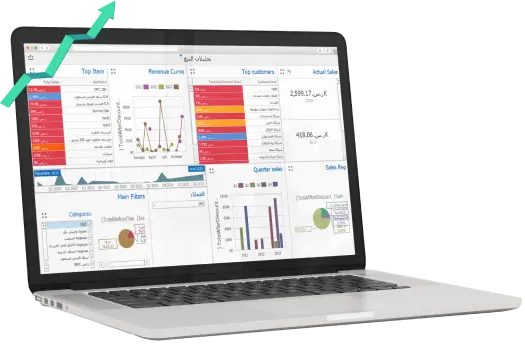Other liabilities are current liabilities which is presented in the statement of financial position and is present in most of the companies' financial statements and other liabilities are amounts owed by the company for the individuals, enterprises, or bodies other than accounts payable, bank liabilities, and provisions, and the accountant must be aware of the accounting treatment of the other liabilities, which vary from company to company by size and most of the other liabilities line items are
1- Accrued Expense
2- Unearned Revenue
3- Third Party Deposits
4- Payroll Taxes
5- Withholding Tax
6- Value-Added Tax (VAT)
7- National Organization for Social Insurance
8- Advance Received from a Customer
9- Income Tax
10- Sundry Creditors
11- Creditors to Buy Lands
12- Dividends Payable
13- Due to Related Parties
Any of these line items can be presented in the statement of financial position and also can be presented within the other liabilities account based on the relative importance of this line item, and we will cover explain briefly these line items
1- Accrued Expense
The accrued expense is that each fiscal period must be allocated to its pertaining expenses, which are in the form of services that it has received and has not yet been paid until the date of preparing financial statements, for example (rent, salaries or wages, utilities, etc.).
For Example
On 12/1/2015, the Eastern Company rented a property to Al-Ahly Real Estate Investment Company of 120,000 EGP annually, and no collections were received from Alexandria Company for Real Estate Investment until the end of 2015:
Monthly rental = 120000/12 = 10,000 pounds
Rent started on 1/12/2015, so this year pertains only one month's rent, which is December
The books of Alexandria Company for Real Estate Investment
|
Account |
Debit |
Credit |
|
Rent Expense |
10,000 |
|
|
Rent Payable |
|
10,000 |
When it is paid in the next fiscal period, the journal entry is as follows:
|
Account |
Debit |
Credit |
|
Rent Payable |
10,000 |
|
|
Cash |
|
10,000 |
Thus, an adjusting entry is created for all the expenses that will not be paid except in the next period, or a service provider account is opened according to the company's accounting system, and the rent payable is included in the current liabilities in the statement of financial position
2- Unearned Revenue
Unearned revenue is revenue not resulting from the main activity of the company (sales), which is revenue from third party renting the company's warehouses, for example, the idea also is that the company will rent land and warehouses to the customer for a year, for example, at 600,000 pounds for the period from 1-7-2018 to 30-6-2019, and the company received upon signing the contract of 400,000 pounds and the rest of the amount in the next year
Upon receiving the amount, the journal entry is as follows:
|
Account |
Debit |
Credit |
|
Bank |
400,000 |
|
|
Unearned Rent Revenue |
|
400,000 |
The contract value is 600,000 for a year, so the one month 50,000 pounds, and during this current year, the number of months from 1-7 until the end of the year is 6 months, and the revenue that will be allocated for this period 300,000 (50,000 x 6)
The journal entry is as follows:
|
Account |
Debit |
Credit |
|
Unearned Rent Revenue |
300,000 |
|
|
Revenue |
|
300,000 |
The balance of Dr. Unearned Rent Revenue is equal to 100000 (400000 - 300000) and this account appears in the other liabilities and Cr. revenue appears within the income statement
In the next year, an adjusting entry is created for the remaining amount and the journal entry is as follows:
|
Account |
Debit |
Credit |
|
Unearned Rent Revenue |
100,000 |
|
|
Revenue |
|
100,000 |
When collecting the rest of the rent amount, which is 200,000 (400000 -200000), the journal entry is as follows:
|
Account |
Debit |
Credit |
|
Bank |
200,000 |
|
|
Revenue |
|
200,000 |
The basic idea is to allocate the accounting period with the value of the revenue for that period, whether it was collected or even not collected.
3- Third Party Deposits
In some cases, the organization may deduct amounts from customers who deal with it or from individuals who perform some services to it, for example, insurance or guarantee
A main contractor has contracted with a subcontractor, provided that the subcontractor performs some of the works amounting to 50000 EGP, is deducted from 10% of which for retention
In this case, 5000 EGP will be deducted from the subcontractor and will to be included in Third-Party Deposits A/c under other liabilities line item in the statement of financial position
The retention is paid to the subcontractor, and the accounting treatment will be as follows:
|
Account |
Debit |
Credit |
|
Third Party Deposit Account |
5000 |
|
|
Cash/Bank |
|
5000 |
4- Payroll Taxes
Payroll taxes are taxes withheld from employee's salaries per month and the payroll tax is provided within 15 days of the previous month and quarterly tax return is submitted to the tax department in January, April, July, and October of each year
When the payroll journal entry is created, this account is credit, this tax is paid before 15 of the month following of monthly payroll and therefore it should be at the end of each fiscal period is a credit balance of this tax value
5- Withholding Tax
It is known that two accounts are opened for the withholding tax: an account that is included in other liabilities, is the amounts deducted by the company's customers from invoices, the company uses credit note and at the end of the fiscal periods, the company takes a testimony from each customer for the deducted amounts and at the end of the year is deducted from the accrued taxes on the company
The second account, it is included in the other liabilities, which are the amounts that are deducted from supplier invoices that are provided by the company at the end of each fiscal period to the Tax Authority
It is not permissible clearing between the two accounts
6- Income Tax
At the end of the year and after arriving at profit before tax, and then the accrued income tax on the company is calculated according to the tax bracket that the profit is included under it
The journal entry is as follows:
|
Account |
Debit |
Credit |
|
Income Tax Expense |
XXX |
|
|
Income Tax Payable (Current Liabilities) |
|
XXX |
7- Value-Added Tax (VAT)
The amounts owed by on the company are the difference between the accrued tax on sales of the company and the input tax on purchases or the material purchased by the company and the difference if the sales tax is the highest, so providing to Tax Authority
8- Due to Related Parties
Due to Related Parties is considered other liabilities, which means that the company has amounts owed to third parties with whom it has related
Related parties are in the following cases when:
1- If this person or entity has control over the company or that the company is controlled by or under common control with the company. In other words, it is in the form of a holding company, subsidiary, and affiliated company
A holding company is a parent company under which a group of companies is controlled by this holding company
A subsidiary is a company that is owned or controlled by another company that controls its financial and operating policy
An affiliated company is a company that has investments in this company, but not it has control and ability to make decisions in its financial and operating policy
2- If is a key member of the senior management of the company or its holding company
Senior management is a team of individuals has the authority, responsibility, and control over the company, directly and indirectly
Related parties can have common control over the company by contractual agreement
Some parties that are not considered as related parties such as:
- Two entities simply because they have a director or key manager in common
- Two ventures who share joint control over a joint venture
- Providers of finance, trade unions, public utilities, departments, and agencies of a government are not considered related parties
Purpose of related party disclosures
As the related party transactions are important for the users of the financial statements to evaluate outstanding relationships and related party transactions and balances between the parties
Related party transactions have an effect on the profit or loss and financial position of an entity
The related parties can enter into transactions that non-related parties may not wish to enter, meaning that a company can sell goods to a parent company or an affiliated company at a cost price it while not doing it with other customers
Disclosures include the nature of the related party relationship
The amount of the transactions
The amount of outstanding balances, including terms and conditions and guarantees
Provisions for doubtful debts related to the amount of outstanding balances
Examples of the kinds of transactions that are disclosed if they are with a related party
- Purchases or sales of goods
- Purchases or sales of property
- Leases
- Service agreements
Related-party transactions can include
- Sales
- Purchases
- Payments to suppliers
- Bank transfers
Thus, any related-party transaction still called the transactions between affiliated companies, intercompany transactions, but best by standards are assigned to the chart of accounts, due to/from related party
Accounts are monitored monthly and settlements are made between these accounts periodically
9- National Organization for Social Insurance
The amounts owed by the company for Social Insurance Authority are monthly when preparing monthly employee payroll where the company incurs a portion and a portion of the employee salaries are deducted and are provided to Social Insurance Authority by check within 15 days from the date of the current month
10- Advance Received from a Customer
It is known that the accounts receivable is typically debit (meaning that the customer is a debtor to the company), however, there are some customers can be paid advance payments and therefore a credit balance shown in the pay as a credit and when the balance sheet is prepared or the end of the fiscal period, the balance must be closed in Customer Advance Account and appears in other liabilities in current liabilities line item, the journal entry is as follows:
|
Account |
Debit |
Credit |
|
Accounts Receivable Account |
XXX |
|
|
Customer Advance Account |
|
XXX |
At the beginning of the fiscal period, the journal entry is reversed for the customer whose balances are credit, and it must be known why it advance payment by them or a return for their or a mistake in recording by the accounts receivable department and for customer advance account must be there analysis for them using Microsoft Excel in the sense that if we have 75,000 balance in the account must be analysis for each customer separately
11- Creditors to Buy Lands
Sometimes the company buys land from government agencies or individuals and therefore an account is assigned to them in the other liabilities in the name of Creditors to Buy Lands Account are under it a sub-account for each land or building purchased by the company from these agencies and this account is typically credit by the value of the land Which is purchased and when the installments are paid are deducted from the account
12- Dividends Payable
This account are dividends that a company's board of directors has declared to be payable to its shareholders for a previous fiscal period
For Example: On February 10, 2018, the board of directors of corporation declared dividends as follows: declared a cash dividend of LE3 per share and it has 5,000 shares outstanding, and the accounting treatment is as follows:
|
Account |
Debit |
Credit |
|
Retained Earnings |
15,000 |
|
|
Dividends Payable (current liabilities) |
15,000 |
On the Date of Record, let say, February 25, 2018
There are no journal entries on the Date of Record, but the company determines which stockholders receive dividends, the corporation’s records (the stockholders’ ledger) determine its stockholders.
On the Date of Payment, let say, March 10, 2018
|
Account |
Debit |
Credit |
|
Dividends Payable |
15,000 |
|
|
Cash |
15,000 |
13- Sundry Creditors
This account is sometimes in companies in the event that there are small contractors who work in paints, plaster, etc. and therefore an account is opened named sundry creditors within the other liabilities is under it sub-accounts are included under the names of these contractors for controlling and monitoring









